Research - (2021) Volume 9, Issue 10
Infection Control Measures in Dental Clinics in Kingdom of Saudi Arabia
Mohammad Zahir Kota1, M Zakirulla2*, Zishan Haider3, Mohammed Ibrahim1, Khaled A Asiri4, Saeed M AlAbdulrahman4, Abdullah M Asiri4, Abeer A Abdullah4, Shaden M Homadi5, Fahad M AL Oudhah4, Abdulaziz A Alasmari4, Abdulaziz A Othman4, Ahmed M Alshahrani4, Ahmed F Alqahtani4 and Raghad S Alhifzi
*Correspondence: M Zakirulla, Department of Pediatric Dentistry & Orthodontic Sciences, College of Dentistry, King Khalid university, Kingdom of Saudi Arabia, Email:
Abstract
Aim: This study aimed to investigate knowledge, attitude, and practices relative to infection control measures in private dental clinics in the Kingdom of Saudi Arabia. Abha, Saudi Arabia. Materials and Methods: The study will be conducted using a survey questionnaire including questions on various aspects of routine infection control measures in dental clinics. Questionnaires will be sent via social media networks to assess dentists' knowledge, attitude, and practices of infection control measures. Questionnaires with less than 90% of completed answers will be excluded. The data were entered and analyzed using the Statistical Package for the Social Sciences (SPSS 20). Chi-square test will be used in bivariate analysis to assess differences in infection control knowledge, attitude, and practice according to gender, qualification (general practitioner versus specialist), geographic location of practice, and years of experience. Results: In this cross-section study, the participants includes 285 males (73.1%) and 105 females (26.9%), were evaluated. The distribution of participants according to age. Autoclave seems to be the preferred means of sterilization (93%); approximately 71.5% of the participants reported heat sterilization of endodontic files and burs (71.1%). Instruments were immersed in decontaminant solutions mainly prior to washing (53.1%). Nearly half (55.1%) of the surveyed dentists applied impermeable barriers on clinical contact surfaces. Routine wiping of working surfaces with surface disinfectant was reported by 88% of the respondents. Conclusions: This research concludes the implementation of particular standard precautions is highly practiced, the overall compliance is good. While the implementation of particular standard precautions is highly practiced, the overall compliance is good. CDE requirements and workshops are mandatory for dentist to improve their knowledge and skills.
Keywords
Infection, Dentist, Safety and protection, Sterilization, Saudi
Introduction
Infection remains to be probably the most crucial issue in medical services globally. Disease prevention and management of cross-contamination are essential in providing a safe environment for patients and healthcare usually workers within healthcare settings generally and more specifically in dental practices [1]. Transmission of infection during dental methods might occur through direct contact with saliva, oral fluids, blood, airborne droplets containing infective agents, or indirect contact via contaminated objects (e.g., instruments, equipment, or environmental surfaces). In addition, direct exposure to blood-borne pathogens like human immunodeficiency viruses (HIV) and hepatitis B and C viruses (HBV and HCV) is a continuous risk [2]. Therefore high standard precautions must be applied and adapted for all patients attending dental clinics no matter their infection status. The significance of this study would be to assess the knowledge, attitude, and practice of infection control in the dental sector in KSA. Even though the present investigation may not evaluate the full range of issues related to infection control, it will focus on all standard categories of items directed towards compliance with particular procedures, such as hand hygiene, use of personal protective equipment, occupational hazards and vaccination, medical records, decontamination, and sterilization [3-5]. It will also be not really that survey relies on self-reported information and may therefore represent an overestimation of correct infection control understanding and practice among dentists.
Material and Methods
A cross-sectional research was carried out using a survey questionnaire which includes questions on numerous elements of routine infection control measures in dental clinics. Questionnaires were sent via social media networks to assess dentists' understanding, attitude, and methods of infection control measures. Questionnaires with less than 90% of finished responses were not included. Permission to conduct the research was obtained from the hospitals. The questionnaire was distributed to the subjects after giving instructions. Sufficient time had been given to the dentists for completing the forms. Later on the forms had gathered, and the surveys were stored anonymous. The ethical letter for carrying out the research was obtained from the Institutional review board (IRB/KKUCOD/ETH/ 2019-20/059) of the College of Dentistry, King Khalid University. The answers were processed making use of the Statistic Package for the Social Sciences (IBM SPSS for Windows, Version 20.0; IBM Corp., Armonk, NY, USA). Chi-square test will be used in bivariate analysis to assess differences in infection control knowledge, attitude, and practice according to gender, qualification (general practitioner versus specialist), geographic location of practice, and years of experience. One-way ANOVA followed by Bonferroni Post Hoc checks in comparison mean overall compliance by gender, type of practice, region of practice, and years of experience. A P-value of significantly less than 0.05 was considered to end up being statistically significant.
Results
In this cross-section study, the participants include 285 males (73.1%) and 105 females (26.9%), were evaluated (Figure 1). The distribution of participants according to age is shown in Figure 2. Autoclave seems to be the preferred means of sterilization (93%). Approximately 71.5% of the participants reported heat sterilization of endodontic files and burs (71.1%). Instruments were immersed in decontaminant solutions mainly before washing (53.1%). Nearly half (55.1%) of the surveyed dentists applied impermeable barriers on clinical contact surfaces.
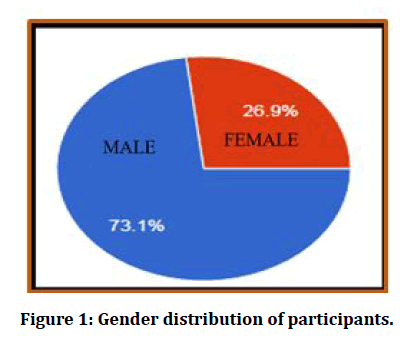
Figure 1: Gender distribution of participants.
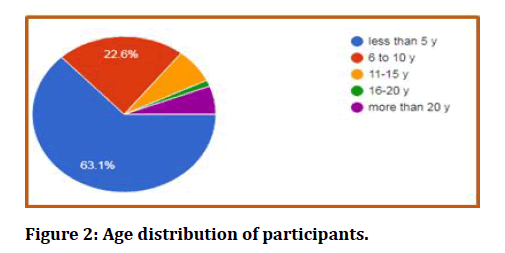
Figure 2: Age distribution of participants.
Routine wiping of working surfaces with surface disinfectant was reported by 88% of the respondents. Approximately half of the practitioners (52.4%) allowed 5- to 15-minute intervals between patients. 85% followed the protocol for the management of sharp injuries at clinics.
Female dentists reported a higher rate of wearing protective eyewear (p=0.006) and disposable gowns for surgical procedures (p=0.037) compared to male colleagues.
Clinicians with fewer years of service were less compliant than those with more than 20 years of experience relative to hands washing practices (p=0.011), wearing masks (p=0.024), and protective eyewear (p=0.041) (Figures 3 to Figure 7).
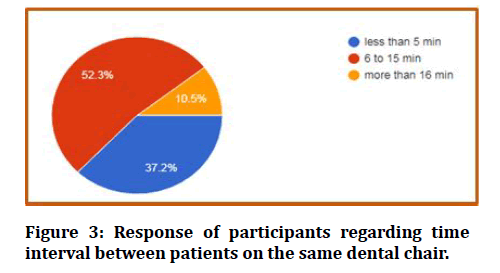
Figure 3: Response of participants regarding time interval between patients on the same dental chair.
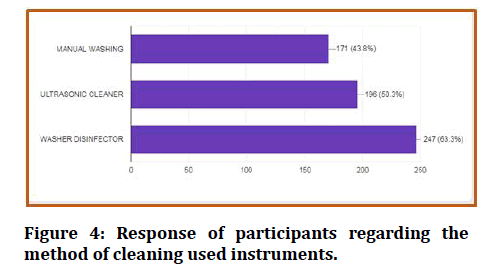
Figure 4: Response of participants regarding the method of cleaning used instruments.
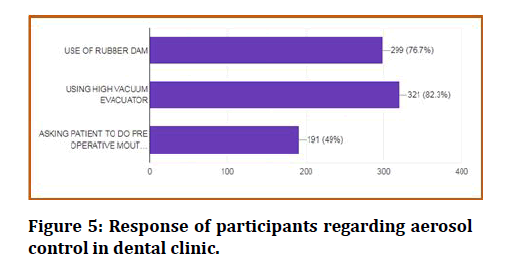
Figure 5: Response of participants regarding aerosol control in dental clinic.
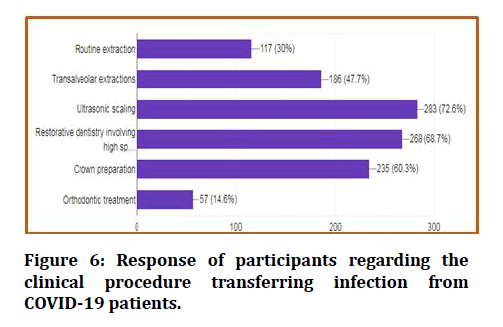
Figure 6: Response of participants regarding the clinical procedure transferring infection from COVID-19 patients.
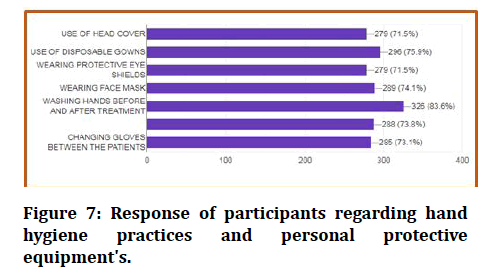
Figure 7: Response of participants regarding hand hygiene practices and personal protective equipment's.
Discussion
In dental practices, an infectious disease can be transmitted in numerous routes, such as direct contact with oral fluids, additional body secretions, and blood. Also, indirect connection with contaminated instruments, operatory equipment, and environmental surfaces is entirely possible [6]. Therefore, it really is essential to adhere to the universally recommended guidelines to prevent cross-infection among dental healthcare providers and patients and between patients themselves. This comprehensive research aimed to evaluate the level of infection-control practices of dental care healthcare providers, including vaccination, hand hygiene, usage of PPE, sterilization, and disinfection in public areas hospitals, private clinics, and academic organizations in Saudi Arabia.
Practitioners in the Kingdom of Saudi Arabia widely apply basic infection control procedures within their practice demonstrating good awareness. Our outcomes reflect better outcomes in evaluation with other researchers performed in GCC. However, adherence for some specific infection control practices was significantly various between genders, such as using protective eyewear and disposable gowns. 86% of dentists follow the management of sharp injury protocol; have separate disposal systems for sharps disposal. Maintaining of record of sharps injury is comparatively less (69%). Most dentists feel infection risk is high (87.2) with dental procedures. Hence 86% of these have taken the vaccination. However, auxiliary staff vaccination status can be below 54%. 52% of practitioners feel it is ok to defer treatment for the infected individual.
Good hand hygiene carried out by dental practitioners is regarded as a practical approach to prevent and control infection transmission in the dental practice environment [7]. This study showed that most participants practice hand washing following patient treatment a lot more than before beginning treatment. The finding of this study is lower than a study conducted in Saudi Arabia that demonstrated about 96.7% and 89.4% of the participants carry out hand hygiene before and after contacting patients, respectively [8]. Autoclave appears to be the preferred means of sterilization (93%). Approximately 71.5% of the participants reported heat sterilization of endodontic files and burs (71.1%). Instruments were immersed in decontaminant solutions mainly before washing (53.1%). Nearly half (55.1%) of the surveyed dental practitioners applied impermeable barriers on clinical contact surfaces. Routine wiping of working surfaces with surface disinfectant was reported by 88% of the respondents. About 50 % of the practitioners (52.4%) allowed 5- to 15-minute intervals between patients. 85% followed the protocol for the management of sharp injuries at clinics.
Generating aerosols, droplets of water, saliva, blood, microorganisms, along other debris are very frequent during the performance associated with dental procedures [9]. Therefore, disease transmission via traveling droplets and aerosol, which remain for an extended period in the air, is a significant concern in the dental environment. To minimize the susceptibility to airborne and blood-borne infections, dental care providers should adequately use PPE such as gloves, protective gowns, and nose and mouth masks [10]. In addition, nearly all respondents reported using a rubber dam (76.7 %) and using hand vacuum evacuators (82.3.9%), and usage of pre-operative mouthwash (49%) while executing dental techniques.
One of the limitations of this research is that the responses were predicated on dentist self-assessment rather than being provided under the supervision of the investigators in a clinical environment. Therefore, the reactions might not have accurately reflected the proper levels of knowledge, attitude, and behavior, and thus, the reported level of practice might be lower than the actual level. Moreover, this number of questions cannot present the essential knowledge and practice of the respondents. Nonetheless, the number of questions was kept to a minimum to enhance the response rate, which method appeared to work well. This study recommended that a multidisciplinary quality control program be applied to avoid contamination of the patients because of failure in the sterilization process. A much more educational program will be implemented.
Conclusion
The results of the present study highlight the appropriate knowledge, attitude, and practice relative to infection control among dentists of KSA. While the implementation of particular standard precautions is highly practiced, the overall compliance is good. Some tangible steps that can be followed to increase the knowledge of infection control may be:
- Development of strategies towards raising awareness among students and dentists.
- CDE requirements and mandatory courses/workshops.
- Distribution of infection control manuals that incorporate updated guidelines and recommendations for dental practices.
- Vaccination and confirmation of the immunization status of dentists and dental auxiliaries—as a prerequisite for practice or license renewal.
Conflicts of Interest
The authors declare that there is no conflict of interest regarding the publication of this article.
References
- Cleveland JL, Foster M, Barker L, et al. Advancing infection control in dental care settings: Factors associated with dentistsâ?? implementation of guidelines from the centers for disease control and prevention. J Am Dent Assoc 2012; 143:1127-1138.
- Mandourh MS, Alhomaidhi NR, Fatani NH, et al. Awareness and implementation of infection control measures in private dental clinics, Holy Makkah, Saudi Arabia. Int J Infect Control 2017; 13:1-14.
- Haridi HK, Al-Ammar AS, Al-Mansour MI. Compliance with infection control standard precautions guidelines: A survey among dental healthcare workers in Hail Region, Saudi Arabia. J Infect Prev 2016; 17: 268-276.
- Dagher J, Sfeir C, Abdallah A, et al. Infection control measures in private dental clinics in Lebanon. Int J Dent 2017; 2017.
- Al-Rabeah A, Moamed AG. Infection control in the private dental sector in Riyadh. Ann Saudi Med 2002; 22:13-17.
- Ahmad IA, Rehan EA, Pani SC. Compliance of Saudi dental students with infection control guidelines. Int Dent J 2013; 63:196â??201.
- Kazi MM, Saxena R. Infection control practices in dental settings-A review. J Dent Allied Sci 2012; 1:67â??71.
- AlAhdal A, Aljehani W, Ali G, Bayoumi A. Knowledge, attitude and practice of infection control measures in private dental clinics in Jeddah, Saudi Arabia. Int J Dent Oral Health 2019; 5:1â??6.
- Mutters NT, Hägele U, Hagenfeld D, et al. Compliance with infection control practices in an university hospital dental clinic. GMS Hyg Infect Control 2014; 9:1â??5.
- Lamb A, Hong C, De Silva H, et al. New Zealand oral health practitionersâ?? cross-infection control practices. N Z Dent J 2019; 115:5â??10.
Author Info
Mohammad Zahir Kota1, M Zakirulla2*, Zishan Haider3, Mohammed Ibrahim1, Khaled A Asiri4, Saeed M AlAbdulrahman4, Abdullah M Asiri4, Abeer A Abdullah4, Shaden M Homadi5, Fahad M AL Oudhah4, Abdulaziz A Alasmari4, Abdulaziz A Othman4, Ahmed M Alshahrani4, Ahmed F Alqahtani4 and Raghad S Alhifzi
1Department of Oral and Maxillofacial Surgery, College of Dentistry, King Khalid university, Abha, Kingdom of Saudi Arabia2Department of Pediatric Dentistry & Orthodontic Sciences, College of Dentistry, King Khalid university, Abha, Kingdom of Saudi Arabia
3Consultant, Oral & Maxillofacial surgeon, King Khalid Civilian Hospital, Tabouk, KSA
4Intern, College of Dentistry, King Khalid university, Abha, Saudi Arabia
5General Dentist, Ministry of Health, Taif, Saudi Arabia
6Intern, College of Dentistry, King Khalid University, Abha, Saudi Arabia, Saudi Arabia
Citation: Mohammad Zahir Kota, M Zakirulla, Zishan Haider, Mohammed Ibrahim, Khaled A Asiri, Saeed M AlAbdulrahman, Abdullah M Asiri, Abeer A Abdullah, Shaden M Homadi, Fahad M AL Oudhah, Abdulaziz A Alasmari, Abdulaziz A Othman, Ahmed M Alshahrani, Ahmed F Alqahtani, Ali A Almaniah, Fares S Alshehri, Nawaf N Al Shahrani, Saad S Al Husini,Infection Control Measures in Dental Clinics in Kingdom of Saudi Arabia, J Res Med Dent Sci, 2021, 9(10): 63-66
Received: 08-Sep-2021 Accepted: 27-Sep-2021
